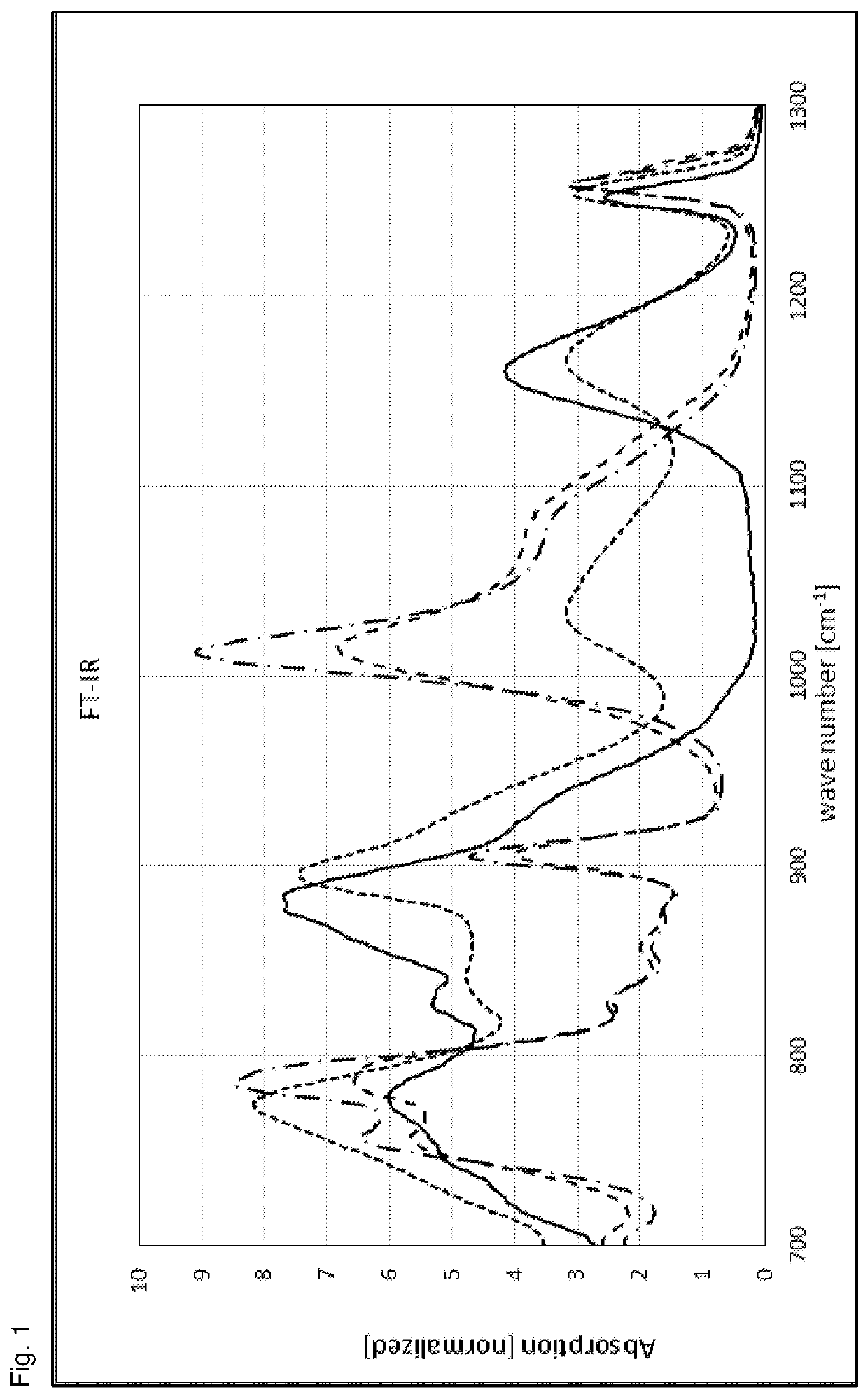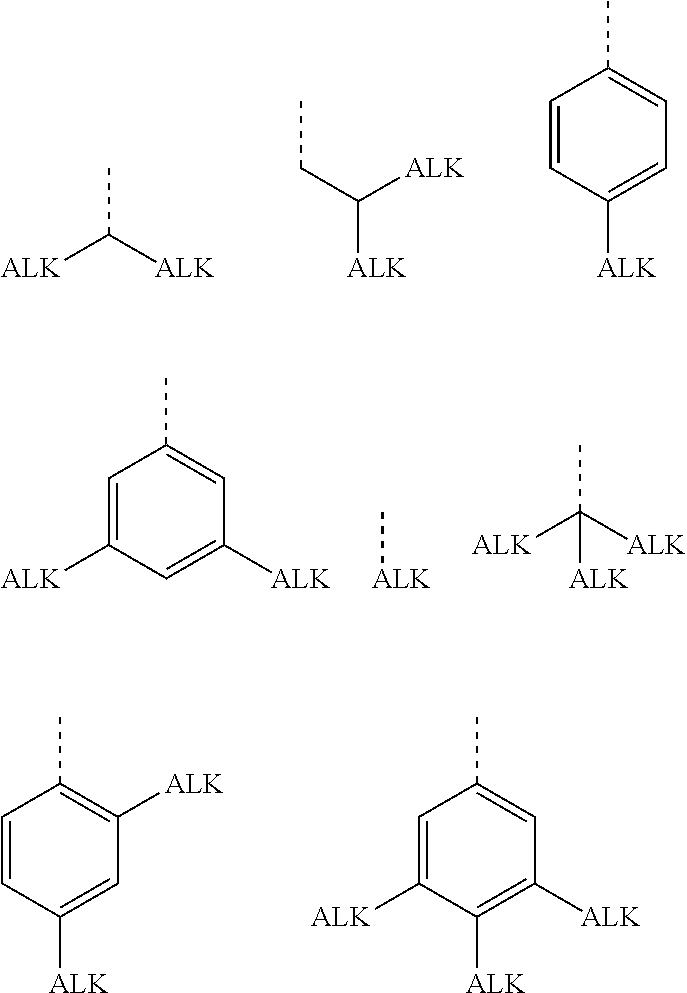Crosslinkable polymer composition with curing catalyst
a technology of curing catalyst and crosslinkable polymer, which is applied in the direction of coatings, etc., can solve the problems of unsatisfactory barrier action of coatings, high void formation, and relatively long curing time of coatings produced with the above methods, and achieves fast and efficient curing process, high curing rate, and quick and efficient
- Summary
- Abstract
- Description
- Claims
- Application Information
AI Technical Summary
Benefits of technology
Problems solved by technology
Method used
Image
Examples
example 1
[0138]Organopolysilazane Durazane 1033 (silazane of structure (I), n:m=33:67) (10 g) is mixed with a 10% solution of B(C6H5)3 in THF (1 g). The mixture is poured on a glass plate to form a film having a thickness of ca. 0.1-0.2 μm and stored at ambient conditions. A reference glass plate with a film obtained from a mixture of Organopolysilazane Durazane 1033 (10 g) and THF (1 g) (no catalyst) is prepared and stored in parallel. After 4 h the material containing the catalyst is dry to touch, while the reference material is still liquid. Both glass plates are heated on a hot plate at 150° C. for 16 h and analyzed by FT-IR. The FT-IR spectra clearly show a higher degree of hydrolysis / crosslinking for the catalyst containing in comparison to the catalyst free material (see FIG. 1).
[—Si(CH3)2—NH-]n-[—Si(CH3)H—NH-]m- (I)
example 2
[0139]Perhydropolysilazane NN-120-20 (20% silazane of structure (II) in di-n-butyl ether) (10 g) is mixed with a 10% solution of B(C6H5)3 in THF (0.2 g). The mixture is poured on a glass plate to form a film having a thickness of ca. 0.1 μm and stored at ambient conditions. A reference glass plate with a film obtained from a mixture of Perhydropolysilazane (10 g) and THF (0.2 g) (no catalyst) is prepared and stored in parallel. After 4 h the material containing the catalyst is dry to touch, while the reference material is still liquid
—[—SiH2—NH-]n- (II)
example 3
[0140]Use of Polysiloxazanes in Combination with a Boron Lewis Acid Curing Catalyst in Technical Coatings
[0141]Siloxazane 2020
[0142]A 4 l pressure vessel was charged with 1500 g of liquid ammonia at 0° C. and a pressure of between 3 bar and 5 bar. A mixture of 442 g dichloromethylsilane and 384 g 1,3-dichlorotetramethyldisiloxane were slowly added over a period of 3 h. After stirring the resulting reaction mixture for an additional 3 h the stirrer was stopped and the lower phase was isolated and evaporated to remove dissolved ammonia. After filtration 429 g of a colorless viscous oil remained. 100 g of this oil were dissolved in 100 g 1,4-dioxane and cooled to 0° C. 100 mg KH were added and the reaction solution was stirred for 4 h, until gas formation stopped. 300 mg chlorotrimethylsilane and 250 g xylene were added and the temperature was raised to room temperature. The turbid solution was filtrated and the resulting clear solution was reduced to dryness at a temperature of 50° C....
PUM
| Property | Measurement | Unit |
|---|---|---|
| temperature | aaaaa | aaaaa |
| temperature | aaaaa | aaaaa |
| temperatures | aaaaa | aaaaa |
Abstract
Description
Claims
Application Information
 Login to View More
Login to View More - R&D
- Intellectual Property
- Life Sciences
- Materials
- Tech Scout
- Unparalleled Data Quality
- Higher Quality Content
- 60% Fewer Hallucinations
Browse by: Latest US Patents, China's latest patents, Technical Efficacy Thesaurus, Application Domain, Technology Topic, Popular Technical Reports.
© 2025 PatSnap. All rights reserved.Legal|Privacy policy|Modern Slavery Act Transparency Statement|Sitemap|About US| Contact US: help@patsnap.com


